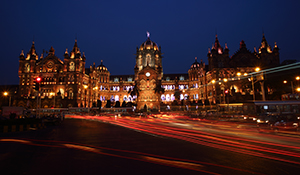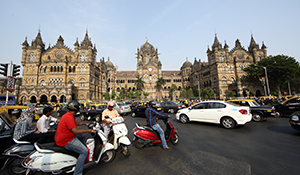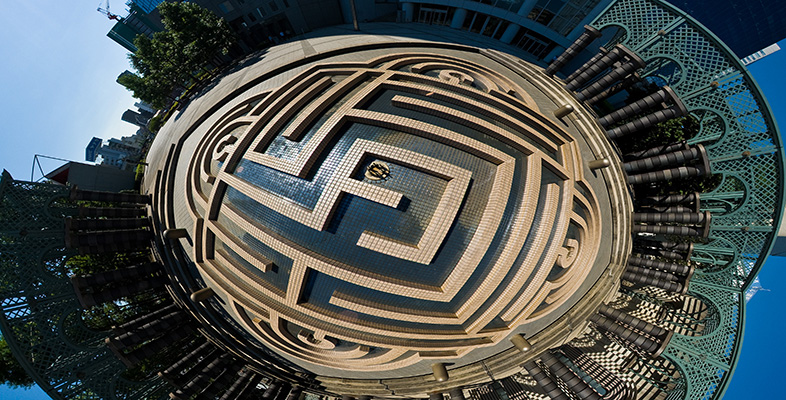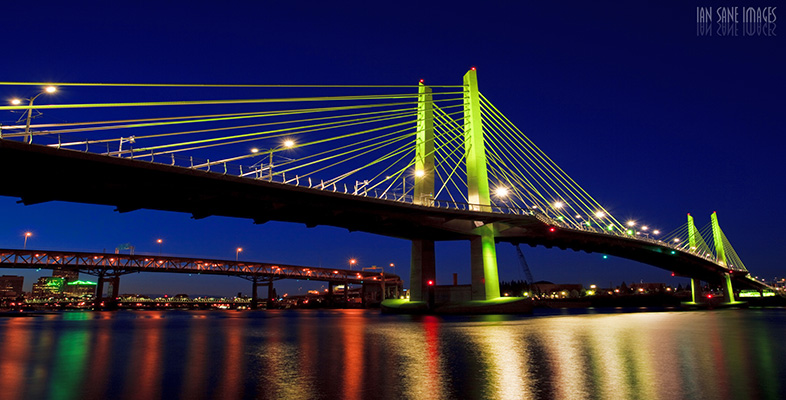 Modern India was built on the railways. They unify a country of over a billion people – a nation divided by language, region, religion and politics. But India’s railways, a complex network, with the densest commuter services in the world, are an extraordinary example of engineering, technology and systems in action. India’s busiest city, Mumbai, is right at the heart of the world’s busiest railway.
Modern India was built on the railways. They unify a country of over a billion people – a nation divided by language, region, religion and politics. But India’s railways, a complex network, with the densest commuter services in the world, are an extraordinary example of engineering, technology and systems in action. India’s busiest city, Mumbai, is right at the heart of the world’s busiest railway.
Mumbai is situated on a peninsula of land on the west coast of India, surrounded by the Indian Ocean. Its most important transport hub, the historic Chhatrapati Shivaji Terminus, opened in 1887 when India was still part of the British Empire. The station was built right at the southern tip of the city to service Mumbai’s busy port. Passengers arrived off the boat and were transported into the Indian interior by rail. Being at the centre of the rail network, connecting the whole of India to the rest of the world, turned Mumbai into the economic powerhouse it is today.
 Mumbai is India’s financial capital, its City of Dreams – home to billionaires and the hopes and fortunes of all of India. Ambitious workers flood into the city, all competing to get ahead. The population has risen from one million to over 17 million in the space of a century. It has twice as many inhabitants as Greater London, all crammed into only a third the amount of space. Similarly, property prices are at a premium, but the 55% of the city’s population who can’t afford them end up living in illegal slums.
Mumbai is India’s financial capital, its City of Dreams – home to billionaires and the hopes and fortunes of all of India. Ambitious workers flood into the city, all competing to get ahead. The population has risen from one million to over 17 million in the space of a century. It has twice as many inhabitants as Greater London, all crammed into only a third the amount of space. Similarly, property prices are at a premium, but the 55% of the city’s population who can’t afford them end up living in illegal slums.
In the middle of this wealth and poverty are India’s middle class – the office workers, teachers and professionals who raise their families in the suburbs but rely on the mega city of Mumbai for work. They are the commuters cramming themselves onto Mumbai’s crowded suburban trains, making more than 2.5 billion journeys per year. The trains are busy, hot and the city’s transport network is tested to its very limits daily. The equivalent traffic of all 270 stations of the London tube network, rushes through one single station - Chhatrapati Shivaji Terminus - every day. But these trains are the essential lifelines of Mumbai. Without them, the city, its economic centre, its millions of people – would all grind to halt.
- Read more about The world's busiest railway station - Chhatrapati Shivaji Terminus.
- Find out more about The world's busiest railway 2015 - Mumbai Railway on TV.
- Explore more free learning from the Open University.



Rate and Review
Rate this article
Review this article
Log into OpenLearn to leave reviews and join in the conversation.
Article reviews